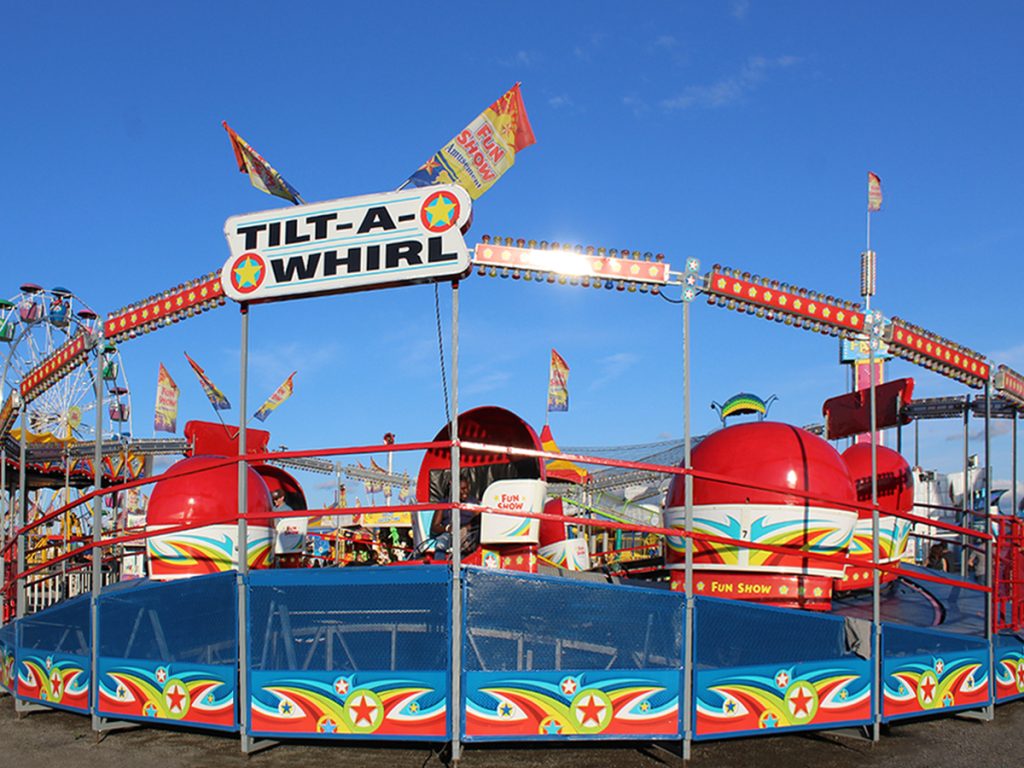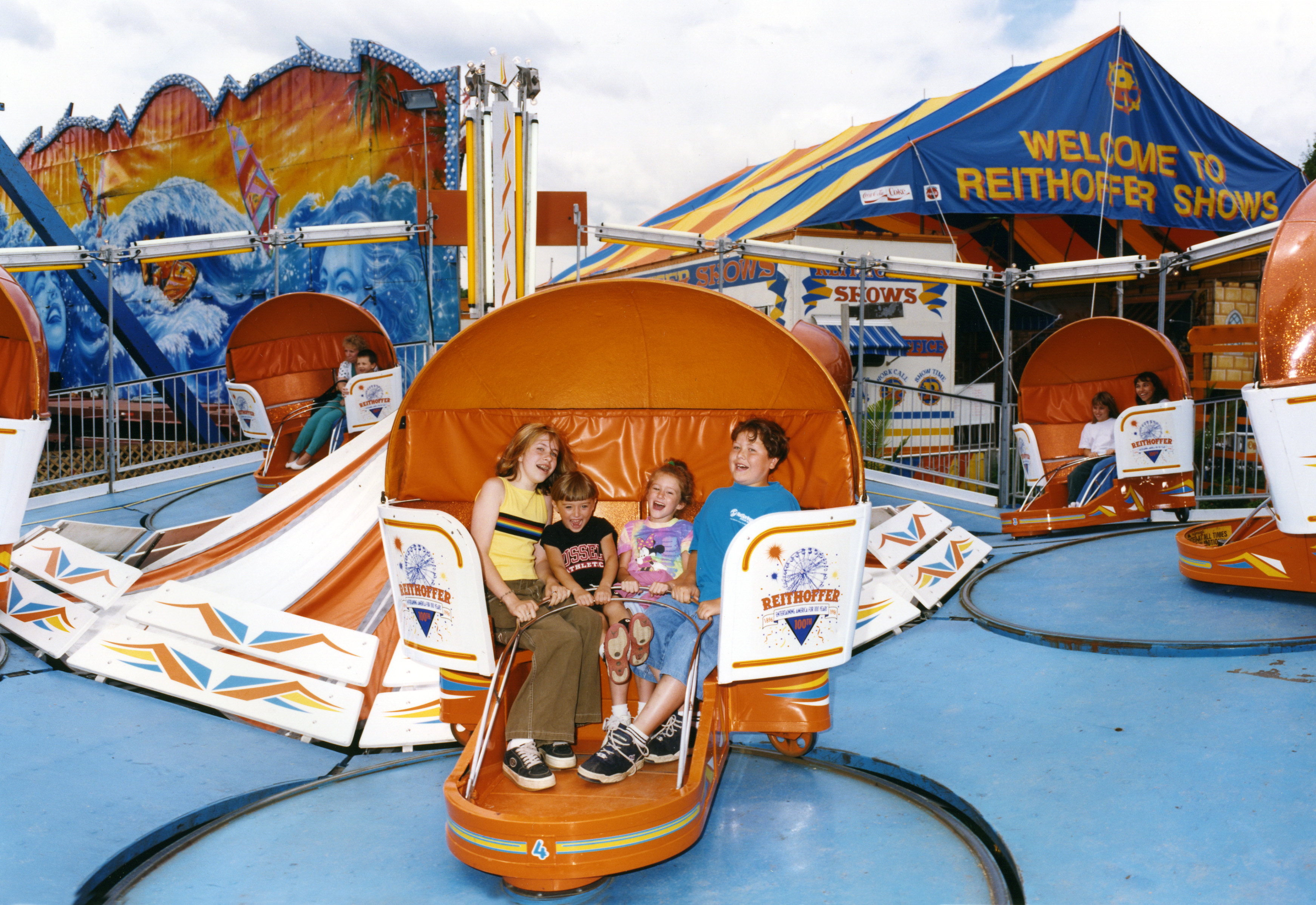Ride Description and History

Tilt a whirl – The Tilt-A-Whirl is a classic amusement park ride that has been thrilling riders for over a century. The ride consists of a circular platform with a number of cars attached to it. The platform is tilted back and forth, causing the cars to spin around and around.
The Tilt-A-Whirl was invented in 1926 by Herbert Sellner. Sellner was a German immigrant who had come to the United States in 1905. He worked as a machinist and engineer, and in his spare time he enjoyed designing and building amusement rides. In 1926, he built the first Tilt-A-Whirl, and it quickly became a popular attraction at amusement parks across the country.
Mechanics and Operation
The Tilt-A-Whirl is a relatively simple ride to operate. The ride operator sits in a control booth at the center of the platform. The operator uses a joystick to control the speed and direction of the platform. The platform is tilted back and forth by a series of hydraulic pistons.
The cars on the Tilt-A-Whirl are attached to the platform by a series of arms. The arms are designed to allow the cars to spin freely around and around. The cars are also equipped with a series of safety belts to keep riders in place.
Historical Evolution
The Tilt-A-Whirl has undergone a number of changes over the years. The original Tilt-A-Whirl had a wooden platform and cars. In the 1950s, the platform was changed to metal, and the cars were made of fiberglass. In the 1970s, the ride was updated with a new control system and safety features.
Today, the Tilt-A-Whirl is still a popular amusement park ride. The ride is often found in both indoor and outdoor amusement parks. The Tilt-A-Whirl is a classic ride that has stood the test of time.
Ride Experience and Sensations

The Tilt-A-Whirl ride provides a unique sensory experience that combines disorienting rotations, centrifugal forces, and visual distortions. These sensations can have a range of psychological and physiological effects on riders, including motion sickness, exhilaration, and fear.
Disorienting Rotations
The Tilt-A-Whirl’s primary feature is its rotating platform, which spins riders around at high speeds. This rotation can cause disorientation and dizziness as riders’ bodies struggle to adjust to the constant changes in direction. The disorienting effects of the Tilt-A-Whirl can be particularly pronounced for riders who are sensitive to motion sickness.
Centrifugal Forces
As the Tilt-A-Whirl spins, riders are subjected to centrifugal forces that push them outwards from the center of the platform. These forces can create a sense of weightlessness and exhilaration, as riders feel themselves being lifted out of their seats. However, centrifugal forces can also cause discomfort or nausea in some riders, especially if they are not accustomed to the sensation.
Visual Distortions
The combination of rotations and centrifugal forces on the Tilt-A-Whirl can also create visual distortions. Riders may experience blurred vision, double vision, or even hallucinations as their brains struggle to process the rapidly changing visual stimuli. These visual distortions can add to the disorienting and exhilarating effects of the ride.
Cultural Impact and Legacy: Tilt A Whirl
The Tilt-A-Whirl has become an iconic amusement park and carnival ride, captivating generations of thrill-seekers. Its unique blend of speed, centrifugal force, and disorientation has made it a beloved attraction for people of all ages.
Popularity and Cultural Significance, Tilt a whirl
The Tilt-A-Whirl has enjoyed immense popularity since its debut in the 1920s. Its accessibility and affordability have contributed to its widespread appeal, making it a staple of amusement parks and carnivals across the globe. The ride’s distinctive circular design and vibrant colors have become synonymous with the excitement and nostalgia of these entertainment venues.
The Tilt-A-Whirl has also been featured prominently in popular culture, appearing in numerous films, television shows, and music videos. Its iconic status has led to its inclusion in cultural references and merchandise, further solidifying its place in the collective consciousness.
Influence on Other Rides and Entertainment Experiences
The Tilt-A-Whirl has had a significant influence on the development of other rides and entertainment experiences. Its innovative design and thrilling sensations have inspired the creation of similar rides, such as the Gravitron and the Zipper. The Tilt-A-Whirl’s disorienting effects have also been incorporated into other amusement park attractions, such as the Haunted Mansion and the Tower of Terror.
Beyond amusement parks, the Tilt-A-Whirl has also influenced other forms of entertainment. Its unique movement and visual aesthetics have been used in music videos, dance performances, and even video games. The ride’s iconic status has made it a recognizable symbol of fun and excitement, transcending its original purpose as an amusement park attraction.